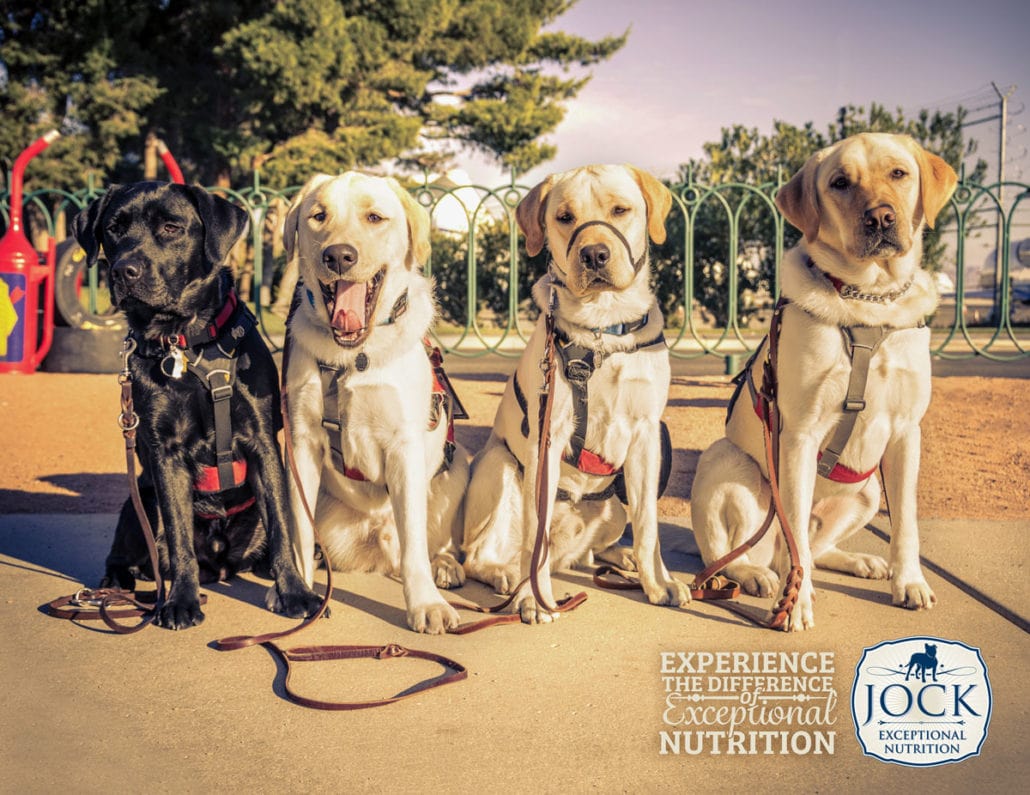Popping in to the shop to pick up some daily essentials is something that most of us can do with relative ease. But take away our sight and this task becomes a great deal more difficult. This is because our world is built for the sighted and navigating it is not easy if you’re visually impaired.
Guide dogs help bridge this gap by helping the blind get around on their own. But there is so much more to it. Whether it’s shopping or going to work, these dogs make a difference in their handler’s life every single day and help restore their independence and confidence.
Not all dogs are equal
Most guide-dog associations around the world have identified a few breeds that are guide dog material. According to the South African Guide-Dog Association for the Blind, these are Golden Retrievers, Labradors, Golden Retriever/Lab crosses and German Shepherds. Other dog breeds can also become guide dogs, but the preferred breeds have the perfect height, temperament and intelligence to take on service work.
Training the dogs
Guide dogs enter the training programme when they are just puppies and are placed with a Puppy Raiser family to house train them. They also attend socialising classes for about 13 weeks to ensure they are comfortable around people and other animals. Only about two-thirds of these puppies will enter formal training, with the rest being disqualified for health reasons or their temperament.
Guide dog training starts when puppies are one year old and lasts for about six months. During this time the dogs are taught commands like “left”, “right”, “back” and “forward”. They are also trained to go around obstacles, leaving enough space for the blind person to navigate safely, and to identify overhead obstacles of up to 2.5 metres.
Traffic training is also very important as the handler’s life is at stake. Dogs are taught to recognise a moving car as a danger to itself and its handler, and to safely navigate traffic when crossing the road.
Training the handlers
When a guide dog is matched to a new owner (a process which can take a year), the pair will spend about two weeks training together. During this time they will be introduced to busier and busier conditions to help them cope with heavy traffic and crowds. After this initial training period, an instructor will continue training for another 2-3 weeks in the new owner’s home environment and help introduce the guide dog to family members, other pets, colleagues and the local vet.
More than just a guide dog
Apart from helping their owner navigate their surroundings faster and safer than before, guide dogs are also considered companions and benefit their owner in a number of ways – some of which can be explored in our article on the healing power of dogs . Studies show that blind people with guide dogs are more confident than before and are more willing to socialise and meet others. They are also more independent, less stressful and better able to cope with unfamiliar surroundings.
For the blind, these are life-changing benefits. Every day their guide dogs not only help them live their lives, but also help them have faith in themselves and their abilities. And that’s probably the biggest mission any guide dog can accomplish.
![2016-April--Guide-dog-secondary-Image[3][2]](https://5f7zezquczeb-u4371.pressidiumcdn.com/wp-content/uploads/2016/05/2016-April-Guide-dog-secondary-Image32-700x437.jpg)

